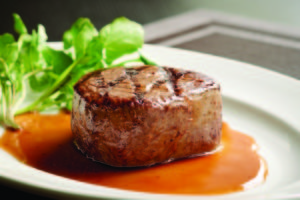 Are you a meat eater?
Are you a meat eater?
Have you ever had a filet mignon? Also called the tenderloin.
Well we have this muscle in our body as well. It’s called the psoas (so-az with a silent p) and it is the most important muscle in the body that you have never heard of.
It is important for many reasons but most importantly, it is the muscle of back pain, and hip pain, and groin pain…
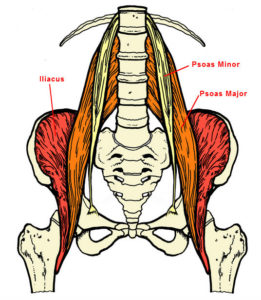
Its reach knows no bounds— from the mound of the big toe all to the way up to the base of the skull. If you stick around I will explain both of those connections later.
But now. back to the tenderloin. Imagine if you will a butchers case. You’ve got the rib-eye, the strip steak, the filet mignon, etc.
Picture those steaks. The ribeye and strip are both prized for their fat, the marbled white lines running through the red meat. And why not—fat is flavor.
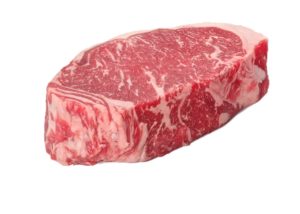
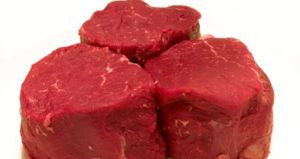
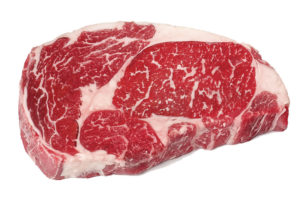
The filet on the other hand (in the middle), has no fat running through it. It is pure meat. Tender meat though not particularly flavorful… but I digress.
I take my education anywhere I can get it and there is a valuable lesson to be learned from the fat content of various steaks.
Fat might be flavor but it is also protection and a muscle without fat (the psoas) is a more vulnerable muscle.
Isn’t that interesting?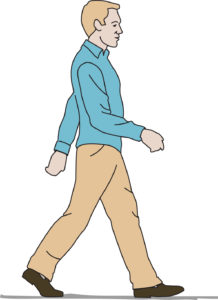
Here is another interesting psoas fact. It is the walking muscle— because every successful step we take is initiated by the psoas helping the back leg to move forward.
The key word in that sentence was successful because I don’t think many people walk successfully which means that they don’t employ the psoas which can, and often does, have grave consequences.
Especially concerning our ability to heal from persistent pain and injury.
Here’s a final psoas fact for you, and I will try not to get too technical, before I explain how everything in the body is connected.

The psoas is a hip flexor, a flexor being a muscle that brings two body parts closer together. In the case of the psoas it is the leg and trunk (think of getting scared and curling into a fetal position. The legs and trunk come together trying to form a ball— a primal instinctive pose).
Now I need to talk a bit about the nervous system into the discussion because it is the psoas’ relationship to the nervous system that makes it the muscle of pain.
The human nervous system is designed to maintain something called homeostasis—or balance—with the systems of the body.
Two main divisions of the nervous system are the sympathetic and parasympathetic nervous systems. The sympathetic nervous system is about excitation while the parasympathetic nervous system is concerned with relaxation.
The sympathetic nervous system is related to both our fight or flight response and it rightly goes into action whenever needed. And flexion is an instinct of fight or flight with the psoas— the main hip flexor—involved in every reaction.
And when we are afraid too often, or feel continuously unsafe, or suffer from a blunt force trauma that is too much to bear in the moment, we get stuck in the sympathetic nervous system and can’t let go.
When we take on too much —whether emotionally or from incidents like car accidents—the psoas becomes the warehouse for the unprocessed energy that stays in the body until we create the right environment to let it go.
This is why the psoas is the muscle of back, hip, groin and other pain.
I hope that wasn’t too much of a mouthful but explaining the psoas is my life’s work because I know all too well how it can impact how we get through the day especially when we suffer from pain.
Learning about how the psoas works and functions is one aspect of the healing process from my perspective. I am a teacher and have found that teaching people about their pain issues as well as showing them what to do to alleviate them is equally important.
So the psoas, the big toe and the base of the skull…
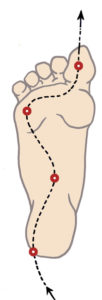
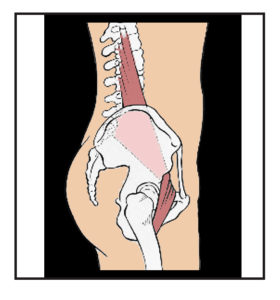
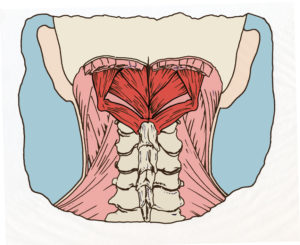
I’m going to get a little more anatomy geek at the moment but here goes.
Your psoas attaches at the back of the inner thigh and pressing down on the inner foot accessed the muscles of the inner thighs. It is a pretty easy thing to feel if you want to stand up.
If you press on the pinky toe side of the foot the outer leg engages and if you press on the mound of the big toe the inner thigh engages.
Everything in the body happens in chains and this particular chain is as follows.
Pressing down on the mound of the big toe engages in the inner upper thigh muscles which set the psoas back engaging it to pull the bones of the lumbar spine forward and down. When they pull down there is a reciprocal action that extends the spinal muscles up against the lumbar bones moving down (something called reciprocal inhibition).
The spinal muscles run from the bottom of the spine all the way to the occiput or base of the skull. So when the psoas is working well it helps the spine elevate successfully.
And there you have a short introduction to the magical mysteries of the psoas muscle.
